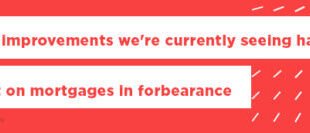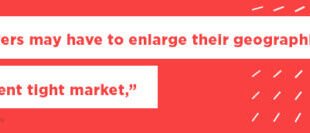
Fannie Mae, along with Freddie Mac, are the two largest buyers on home loans in the country.
In order to compete with FHA loans, which requires just a 3.5% down payment, Fannie Mae created the HomeReady™ loan program requiring just a 3% down payment.
In this article, we’ll explore the HomeReady™ loan program to see how it stacks up against other low down payment loan options.
Rate Search: Check Today’s Mortgage Rates
What is the HomeReady™ program?
The HomeReady™ program was created by Fannie Mae to help low-income borrowers by offering home loans requiring just a 3% down payment, which is lower than FHA loans which require 3.5% down.
In order to qualify your income cannot exceed 100% of the area median income (AMI). Visit the Home Ready website to check the income limits in your area.
In addition to having a low down payment, HomeReady™ loans have a low credit score requirement of 620. The credit requirement is lower than other types of conventional loans making them easier to qualify for.
HomeReady™ Loan Requirements
- 620 credit score
- 2 years of stable employment history
- Alternative credit lines can be considered
- Income cannot exceed 80% of median income
- Cannot have another open Home Ready mortgage
- Attend 4-6 hours of homeownership education courses
What’s the Difference between HomeReady™ & FHA Loans?
FHA loans are government-backed loans, while HomeReady™ loans are issued by insured by private mortgage insurance companies and have lower insurance rates.
They do have a couple of similarities such as a low down payment and they both target low-income home buyers with a maximum debt-to-income ratio of 50%. They also both allow for the down payment to be a gift from a friend or relative.
Key differences between HomeReady™ & FHA
- Down payment requirements – HomeReady™ loans have the lowest down payment requirement of any type of home loan at just 3%. FHA loans require a slightly higher down payment of 3.5% as long as you have a minimum 580 credit score. If your score is between 500-579 you will need 10% down.
- Credit score – FHA loans have the lowest credit requirements of any home loan available. With a minimum 500 credit score, a 10% down payment is needed. Borrowers with a 580+ credit score will need a 3.5% down payment. HomeReady™ loans have a higher credit score requirement of 620.
- Income limits – There are no restrictions on the amount of income you must have with FHA loans. HomeReady™ loans have strict income limits that require borrowers’ income to not exceed 100% of the area median income (AMI).
- Income verification – One of the key differences between the two types of loans is that HomeReady™ allows you to use income from non-borrowers who reside in the property from relatives or individuals who are renting rooms. FHA loans will only consider income from borrowers and co-borrowers who are on the loan application.
- Mortgage insurance – HomeReady loans are a type of conventional loan that requires monthly PMI payments until the loan-to-value ratio reaches 78%, at which point PMI is no longer required. FHA loans require two types of mortgage insurance premium (MIP), a one time up-front MIP payment equal to 1.75% of the loan amount, plus an ongoing monthly MIP payment. The length of time MIP is needed depends on the down payment amount. Borrowers with less than 10% down will have MIP payments for the life of the loan. Borrowers with at least 10% down will have to carry MIP for 11 years.
- Credit history – Only traditional lines of credit that appear on your credit report can be used to qualify for an FHA mortgage. HomeReady™ loans let lenders use non-traditional credit lines such as rental payments to help borrowers with limited credit history qualify.
HomeReady Loans | ||
Down Payment | 580 with 3.5% down | |
Minimum Credit Score | ||
Income Limits | No income limit | 80% of area median income |
Mortgage Insurance | Up-front MIP payment * >10% down MIP cancels in 11 yrs | Monthly PMI payments * PMI is canceled when LTV ratio reaches 78% |
Income Sources | Only applicant’s income can be used | Can use income from parents, renters, or anyone else living in the home |
Home Buyer Education | Not required | 4-6 hours of homeownership education courses |



